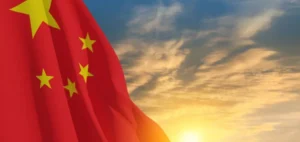In March, the government published a shortlist of 20 electrolytic projects totalling 408 MW as part of a first allocation round (HAR1).
Competitive Hydrogen Allocation: Towards 2025 in the UK
Around 250 MW should be awarded in the fourth quarter of 2023, with the first projects operational in 2025.
“We also intend to launch the second hydrogen allocation round (HAR2) later this year, with the aim of awarding contracts of up to 750 MW in 2025, subject to affordability and value for money,” he said.
“At the same time, the government is about to publish the Low Carbon Hydrogen Agreement (LCHA) for HAR1 projects,” he said.
ACHC will provide support through contracts for difference. This will close the cost gap between low-carbon hydrogen and high-carbon fuels.
“After HAR2, the government should move to an annual competitive price-based allocation for LCHAs by 2025 for electrolytic projects, and potentially other specified carbon capture hydrogen production technologies,” he said.
A call for evidence on this transition is due to close on August 11. The government is targeting up to 10 GW of low-carbon hydrogen production capacity by 2030. At least half of which comes from electrolytic hydrogen. It aims to produce up to 1 GW of electrolytic hydrogen. But also up to 1 GW of CCUS hydrogen in operation or under construction by 2025.
According to S&P Global Commodity Insights analyst Matthew Hodgkinson, “HAR2 funding would support three times the capacity of the initial allocation cycle”.
The level of interest in the cycle “will provide an even greater indication of the appetite for private finance in the UK low-carbon hydrogen industry, and will indicate whether investors have confidence in UK low-carbon hydrogen legislation,” he said.
Hydrogen UK grants: GBP 100 million for electrolysis
In October 2021, the Carbon Neutral Strategy confirmed that up to GBP100 million ($127 million) would be provided. In order to award contracts for up to 250 MW of electrolytic projects in 2023. This level of funding would provide a subsidy of GBP1/kgH2 to 10,000 mt/year (or 65 MW-75 MW of electrolysis) of production over a 10-year period, according to S&P Global’s May 2023 UK Hydrogen Future Energy Insights report.
“This is well short of the UK government’s target of at least 5 GW of electrolysis-based capacity by 2030. The UK program is one of the most advanced in terms of progress and project support. However, if the government intends to provide a subsidy for the entire 1 GW of capacity to be operational or under construction by 2025, the value of the subsidy will be very small (around 0.10 GBP/kgH2),” said Hodgkinson.
In its updated strategy, the government stated that it would continue to develop a policy based on the recommendations of the independent carbon neutrality review. Consultations on hydrogen blending were due to be published later this year. As well as design options for intervention in the hydrogen-to-electricity market. It also included the development of a roadmap for hydrogen production. As well as the design of transport and storage (T&S) business models.
In response to a T&S consultation published on August 2, the government said it favored a regulated asset base model combined with some form of revenue support for hydrogen transport. RAB-based models have gained ground in the UK for large, complex utility infrastructure projects and new nuclear projects.
Strategic Planning for Hydrogen in the UK
For storage, he favored a model that included a minimum revenue floor to provide certainty for investors.
Centrica, which wants to invest GBP2 billion to convert its raw gas storage facility into hydrogen, said it would only proceed with “the right regulatory support framework.”
Meanwhile, “some form of strategic planning, potentially combined with elements of market-led development, is required to enable the efficient, cost-effective and timely deployment of transport and storage infrastructure”, the government said.
“We will define a “hydrogen networks pathway” of the next steps in our vision for the development of hydrogen T&S in the UK, alongside the hydrogen production roadmap by the end of 2023,” he said.
“A future grid operator competent in electricity and gas networks would be responsible for central strategic planning for hydrogen T&S,” he said.
Platts, part of S&P Global Commodity Insights, valued the UK electrolytic hydrogen price (PEM electrolysis, including capital expenditure) at GB5.47/kg on August 1. They valued UK blue hydrogen at GBP2.86/kg. Platts rates UK electrolytic hydrogen prices among the most expensive.






















